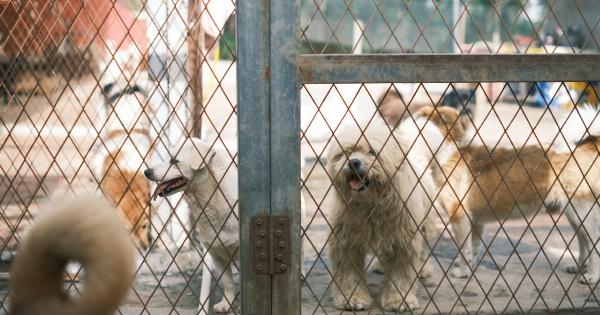Communicating effectively with your dog is crucial for building a strong bond and maintaining a peaceful coexistence.
While dogs can’t speak our language, they have their own unique way of conveying their thoughts and emotions through body language. Understanding your dog’s body language is the first step towards becoming a better communicator and providing the care and attention they need.
In this article, we will explore the basics of dog body language and how you can decode their cues to strengthen your relationship.
1. The Tail
The tail is one of the most expressive parts of a dog’s body. It can communicate various emotions, including happiness, excitement, fear, and aggression.
A wagging tail usually indicates a positive state of mind, but it’s important to consider the entire body language context.
2. Ears
The position and movement of a dog’s ears can reveal a lot about their mood. When a dog’s ears are relaxed and slightly forward, it shows they are attentive and interested.
However, pulled back ears can indicate fear or submission, while raised ears may signify alertness or aggression.
3. Eyes
The eyes are often referred to as the “window to the soul,” and this holds true for dogs too. Wide-open eyes with dilated pupils can indicate fear or excitement, while relaxed eyes suggest calmness and contentment.
A direct, intense stare can be a sign of aggression or challenge, so it’s important to avert your gaze in such situations.
4. Mouth and Facial Expressions
A dog’s mouth can provide valuable insights into their emotional state. A relaxed, slightly open mouth suggests a calm and friendly demeanor. On the other hand, a tense, closed mouth may signify anxiety or aggression.
Pay attention to other facial expressions like lip licking, yawning, or baring teeth, as these can further indicate their mood.
5. Body Posture
The way a dog positions their body can communicate a lot about their intentions and level of comfort. A relaxed and loose body posture generally signifies a happy and approachable dog.
Conversely, a stiff, tense body with raised hackles can indicate fear, aggression, or arousal. Lowered body posture with a tucked tail usually suggests submission or fear.
6. Vocalizations
While body language is the primary mode of communication for dogs, vocalizations also play a role in conveying their emotions. Pay attention to different types of barks, whines, growls, or howls, as they can indicate various needs and emotions.
For instance, a high-pitched bark may denote excitement, while a low, guttural growl can signal aggression.
7. Tailoring Communication to Your Dog’s Breed and Individuality
It’s important to remember that different dog breeds may have variations in their body language cues. Additionally, each dog has its own unique personality and experiences that can influence their behavior.
Spend time observing and getting to know your specific dog’s body language preferences and quirks. This will help you establish a stronger connection and communicate more effectively.
8. Signs of Stress or Discomfort
Recognizing signs of stress or discomfort in your dog is crucial for their well-being. Some common indicators include excessive panting, lip licking, yawning, pacing, hiding, or attempting to escape.
If you observe these signs, it’s important to create a calm and safe environment for your dog and address any potential triggers.
9. Practicing Positive Reinforcement
By understanding your dog’s body language, you can also reinforce positive behaviors and correct unwanted ones. Positive reinforcement techniques involve rewarding desired behaviors rather than punishing undesirable ones.
This approach strengthens your bond with your dog and encourages them to display the behaviors you desire.
10. Seeking Professional Help
If you’re unsure about your dog’s body language or struggling with a specific behavioral issue, don’t hesitate to seek professional help.
Dog trainers, behaviorists, or veterinarians specialized in canine behavior can provide valuable guidance and help address any concerns you may have.
Conclusion
Understanding your dog’s body language is essential for effective communication and building a strong relationship.
By paying close attention to their tail, ears, eyes, mouth, facial expressions, body posture, and vocalizations, you can decipher their emotions and needs more accurately. Remember to tailor your communication to your dog’s breed and individuality, while also acknowledging signs of stress or discomfort.
With patience, observation, and positive reinforcement, you’ll be well on your way to becoming a proficient “dog whisperer” and forging a deeper connection with your furry friend.

























